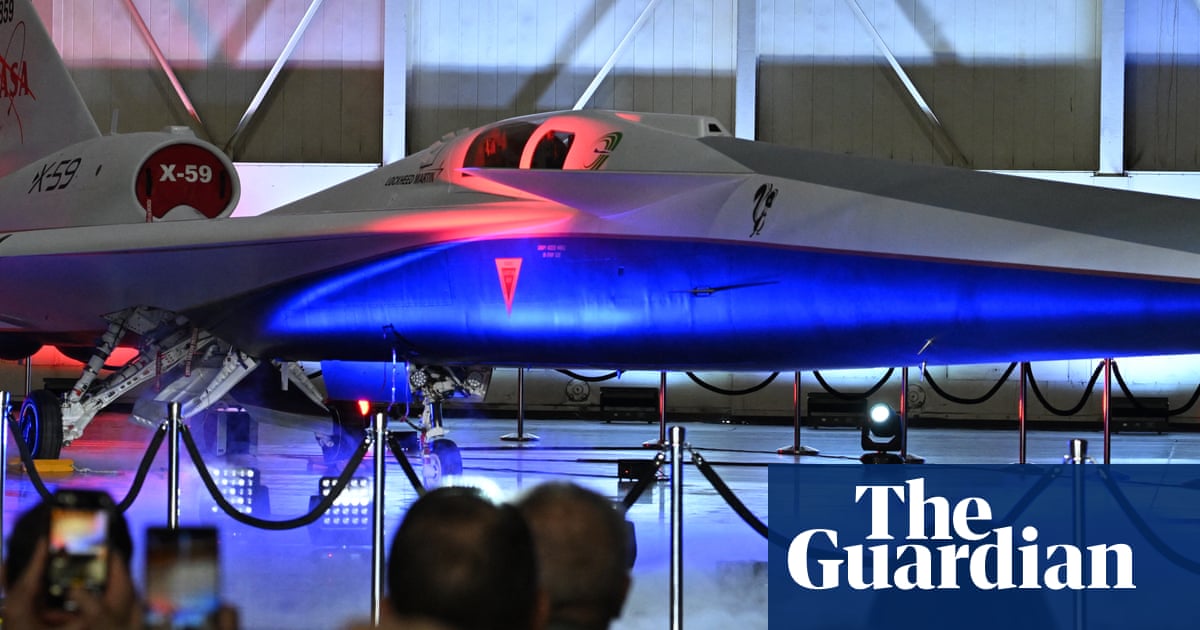In launch event on Friday, agency shared plans to test over US cities to see if it’s quiet enough by engaging ‘the people below’
Nasa has unveiled a one-of-a-kind quiet supersonic aircraft as part of the US space agency’s mission to make commercial supersonic flight possible.
In a joint ceremony with Lockheed Martin Skunk Works in Palmdale, California, on Friday, Nasa revealed the X-59, an experimental aircraft that is expected to fly at 1.4 times the speed of sound – or 925mph (1,488 km/h).
The aircraft, which stands at 99.7ft (30.4 metres) long and 29.5ft wide, has a thin, tapered nose that comprises nearly a third of the aircraft’s full length – a feature designed to disperse shock waves that would typically surround supersonic aircraft and result in sonic booms.



Wouldn’t suborbital flight be a lot more fuel efficient?
Not likely. Jet engines are crazy efficient compared to rockets.
And as far as I know there are only 2 or 3 companies who are even attempting to make a fully reusable rocket, and it’s really hard.
(Those companies being SpaceX and Stoke aerospace, but Stoke is a long way off. Relativity space was going to do full reusability, but I think they dropped the plan.)
Wasn’t somebody developing an engine with two modes, an air breathing one and a rocket one?
Because suborbital flight is nowhere as hard as reaching a stable orbit (even LEO) and if your vehicle can operate in air-breathing mode most of the way up it needs not be anywhere as heavy since it doesn’t need to take that much oxidizer along.
What I’m talking about here is a problem around the same order of complexity as an intercontinental ballistic missile, not the same order of complexity as a space shuttle.
S.A.B.E.R. was the project name I believe, synergetic air breathing rocket engine.
Basically you intake air at lower speeds and transition to LOX when necessary.